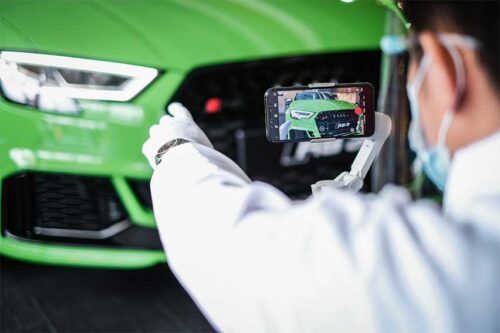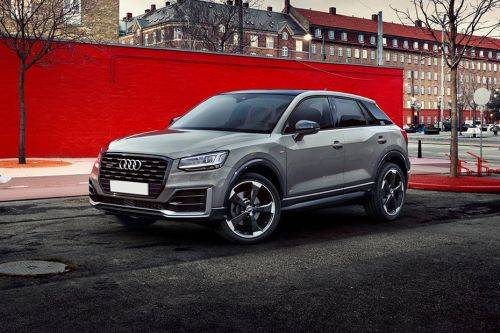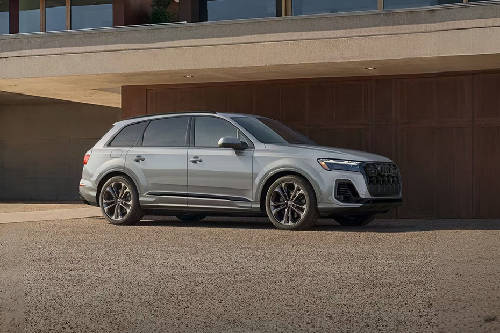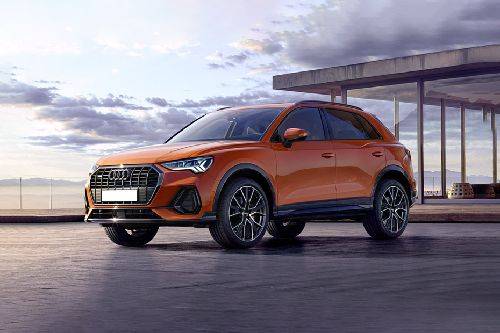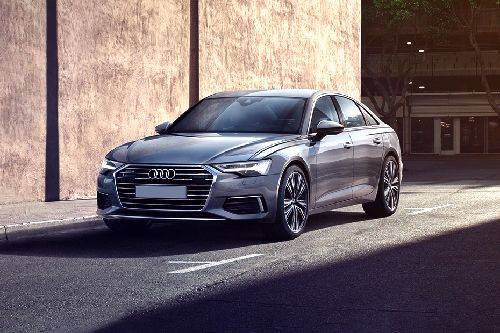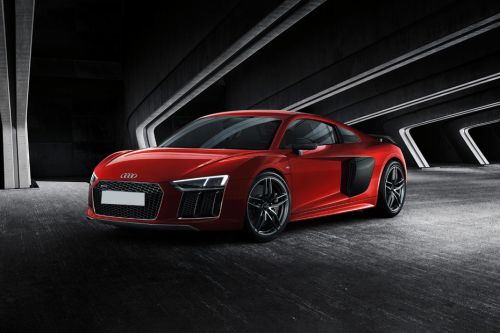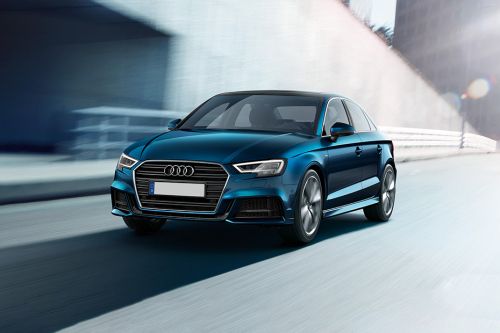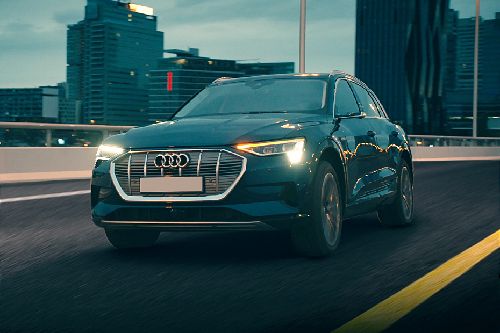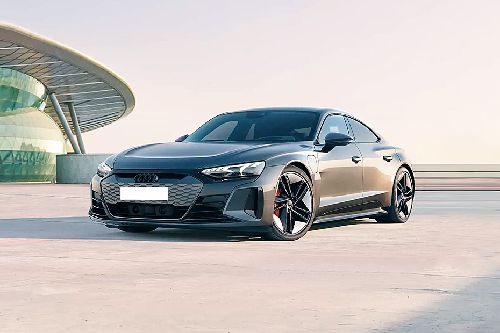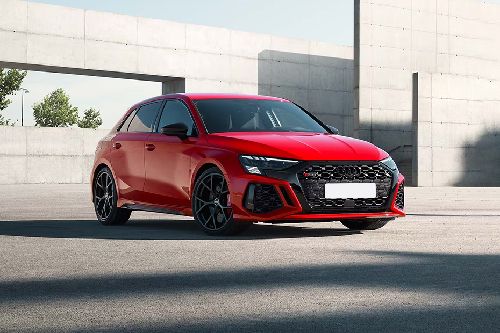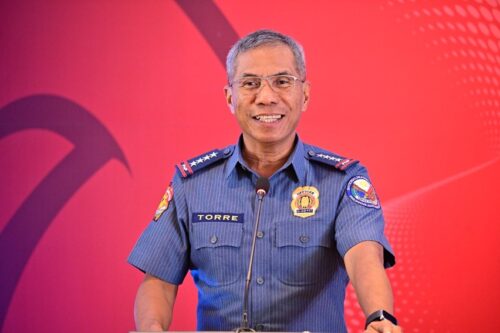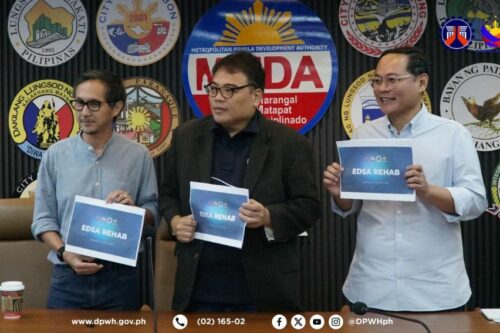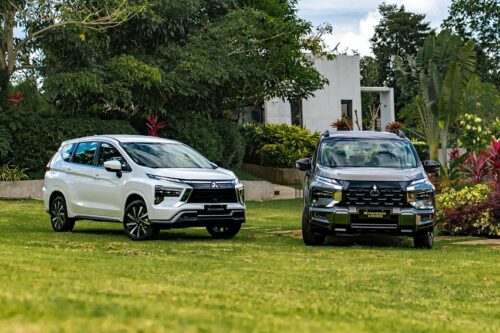Audi looks back at historical triumph of legendary five-cylinder engine
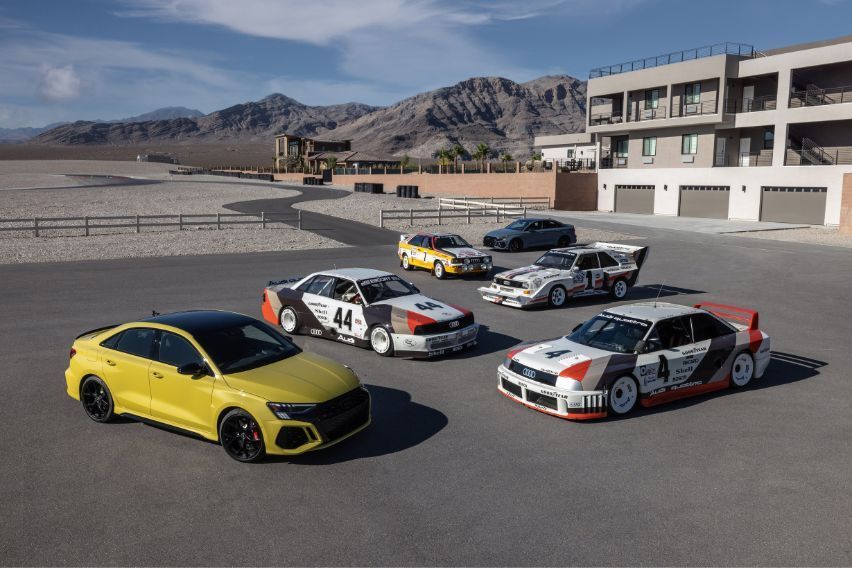
MANILA: While waiting for the 2022 RS 3, Audi of America commemorated the renowned five-cylinder engine's historical success. Audi's five-cylinder engine, with its unequal number of cylinders and unique 1-2-4-5-3 firing order, delivers unrivaled performance and a distinctive sound on the racetrack and on the road. The legacy of the five-cylinder engine lives on, and is now available in the new 2022 Audi RS 3.
KEY TAKEAWAYS
What powers the 2022 Audi RS 3?
The 2022 Audi RS 3 is powered by a 2.5-liter five-cylinder engine.What was the record set by the 2022 RS 3 at the Nürburgring Nordschleife?
The 2022 Audi RS 3 set the lap record for compact cars on the legendary Nürburgring Nordschleife with a time of seven minutes 40.748 seconds in June 2021.Audi's high-performance downsizing technique has now moved to the compact segment, achieving the perfect balance of supercar performance and competent efficiency. The latest 2.5-liter five-cylinder engine, which will be used in the 2022 RS 3, now has the most horsepower output of any Audi five-cylinder car in series production. This outstanding amount of power output corresponds to 160.4hp per liter, allowing the new RS 3 to set the lap record for compact cars on the legendary Nurburgring Nordschleife with a time of seven minutes 40.748 seconds in June 2021, matching the original Bugatti Veyron 16.4 lap of seven minutes 40 seconds in 2005, which had only 123.4hp per liter at the time.
As the market moves to the next phase of motor development with electrification, the final iteration of the internal combustion engine is the best it can possibly be, integrating new technological developments to boost efficiency and performance. The five-cylinder engine in the all-new RS 3 has been improved in several ways over the previous generation.
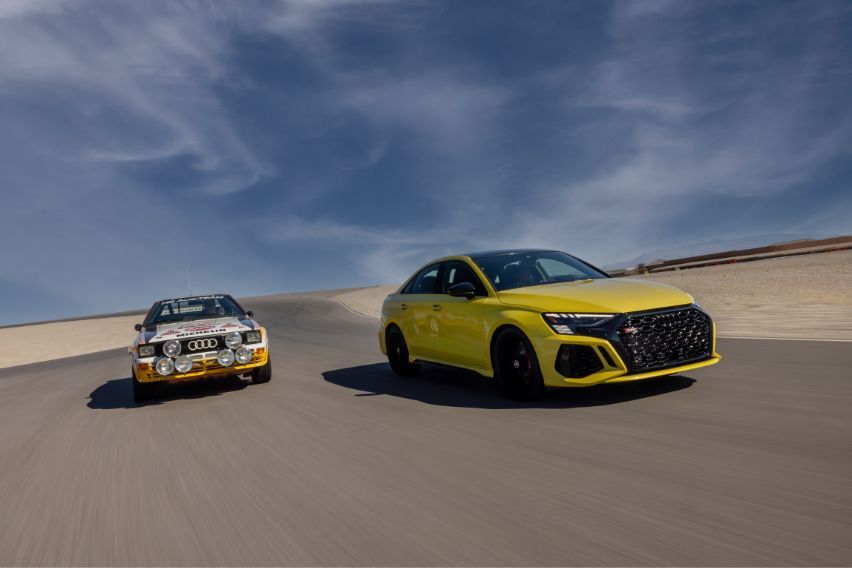
Power range has been expanded from 394hp to 401hp. Maximum torque has been increased from 354lb-ft to 369lb-ft at 3,500 rpm, resulting in a significantly sharper performance curve with maximum power reached earlier and sustained longer than before.

The engine in the all-new RS 3 also accelerates faster from 0-60mph than its predecessor — from 3.9 seconds to 3.6 seconds. It also has an impressive top track speed of 180 mph, the highest of any Audi RS five-cylinder model ever.
Audi's five-cylinder engines have become cult classics, with rich historical roots in Audi's DNA, and have become a cornerstone of the passionate Audi Sport brand. The engine has won numerous motorsports victories, as well as the "International Engine of the Year Award" nine times in a row since 2010 from an international jury of motoring journalists. Besides its achievements on and off the track, the five-cylinder engine's unique and unmistakable sound is the feature that most evokes passion in enthusiasts. The optional Sport exhaust system on the 2022 RS 3 changes the engine tone for a more ferocious sound, making it the most powerful and loudest sound ever produced by an Audi five-cylinder.
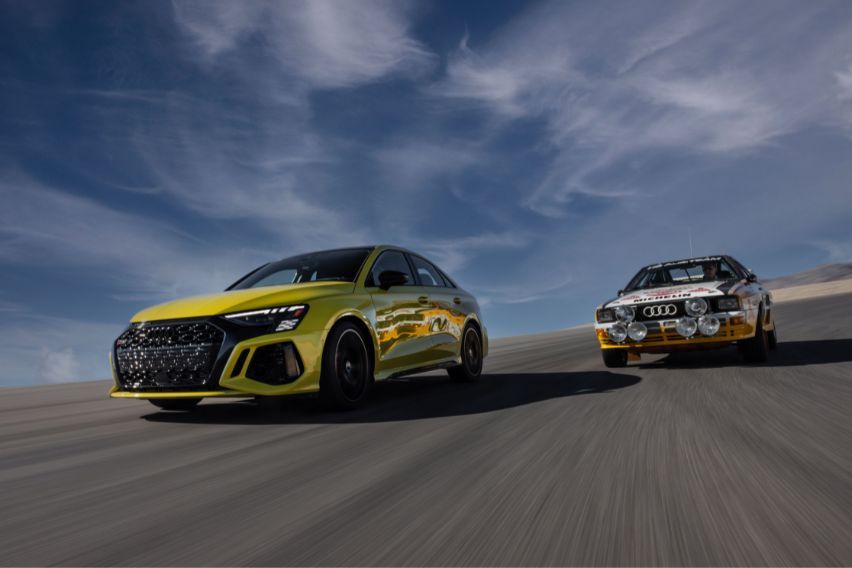
In the early 1970s, Audi engineers were tasked to design a new source of engine power that might outperform a four-cylinder engine while maintaining efficiency. Due to engineering issues with space, weight, and efficiency, the six-cylinder engine was deemed out at the time. The 1976 Audi 100 (C2) would be powered by the first five-cylinder Audi engine, a 2.1-liter five-cylinder engine with 136hp. The rest, as they say, is history.
The Audi five-cylinder engine and quattro all-wheel drive are icons with a glorious history that helped shape their story in the early 1980s. Today, the permanent all-wheel drive system and legendary engine continue to enthrall Audi fans all around the world.

The original Audi "Ur-quattro" quattro would make its debut at the 1980 Frankfurt Motor Show, featuring technological advancements such as turbocharging, an intercooler, and Audi's first permanent four-wheel drive.
Finn Hannu Mikkola won the World Rally Championship (WRC) driver's title in 1983 with the Audi Ur-quattro. In the same year, Audi released the wide-track Sport quattro, which is driven by a newly developed aluminum five-cylinder engine with 306hp.
In 1984, Audi became the first automaker to standardize a fully electronic map-controlled ignition system and catalytic converter in a five-cylinder engine, with the Audi 100 (C3), Audi Coupe (B3), and Audi 90 (B3).
The Group B rally was regarded as the apex of the WRC and was recognized as one of the most exciting and thrilling periods of motorsport competition. Cars were given unlimited amounts of turbo boost and no weight restrictions from 1982 to 1986, resulting in extreme performance.
The renowned Audi Sport quattro served as the foundation for a new Group B rally car that produced an incredible 450hp in its inaugural race, the Ivory Coast rally, in 1984. In the same season, the Group B Audi quattro A2 with 360hp from the same five-cylinder race engine won the driver's title, while Audi won the manufacturer title. Audi withdrew from the rally in 1986, but not before leaving a great legacy. In 1987, Walter Rohrl won the Pikes Peak Hill Climb in an Audi Sport quattro S1 (E2) with 598hp.
Audi also participated in the IMSA GTO and SCCA Trans Am series, a North American sports car racing series that pushed the boundaries of race car technology. In 1988, the Audi 200 quattro Trans-Am used a production five-cylinder engine for homologation purposes with up to 510hp from a 2.1-liter engine — an astounding demonstration of 242hp per liter. In 1989, the Audi 90 quattro IMSA GTO ruled the US touring car scene with 720hp from a 2.1-liter five-cylinder race engine.
Audi won eight of the 13 events, with champions Hans Stuck, Walter Rohrl, and Hurley Haywood leaving everlasting impressions on anyone who heard the distinctive sounds of legendary prowess from the Audi five-cylinder engine.
After repeatedly dominating the track, the quattro all-wheel drive was prohibited from racing, since it was regarded as an “unfair advantage.” Stuck went on to say, “My mind races thinking about the countless victories and successes Audi has had with the legendary five-cylinder engine. The combination of the five-cylinder paired with quattro was not only unique, but it was unstoppable.”
In 1994, Audi created a strong model line with the first series production RS-model, the RS 2 Avant. As an Avant with the engine of a sports car, the RS 2 would produce 315hp. The TT RS created by quattro GmbH, currently known as Audi Sport, would use TFSI turbocharging and gasoline direct injection with a transversely mounted engine in 2009. The 2.5-liter engine of the 2012 Audi TT RS, which also debuted in the US for the first time, was the first gas engine in the world to have a compacted-graphite iron cylinder block.
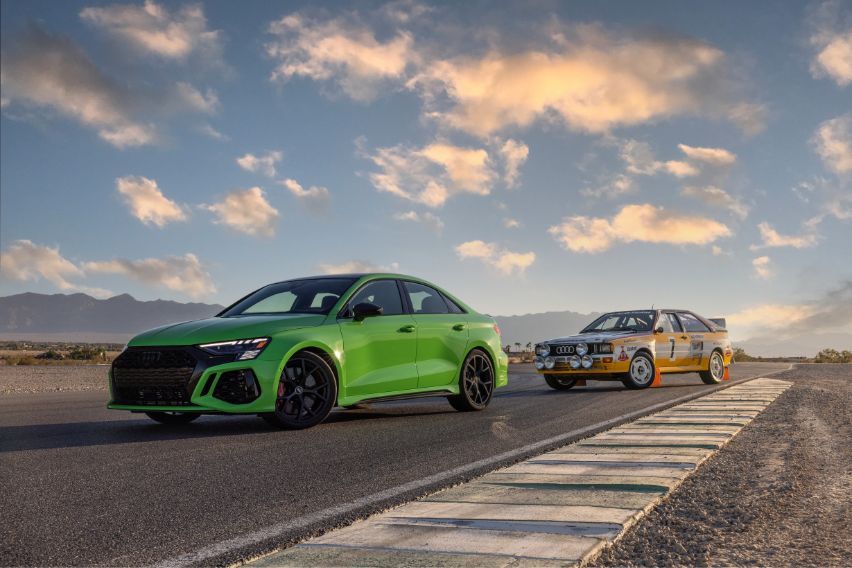
While the TT RS will be discontinued in the US in 2022, it will continue to be sold in other international markets. The Audi five-cylinder engine will always be a fundamental pillar for enthusiasts and collectors alike, commemorating the brand's triumph, performance, and rich history, and will continue to be available after the all-new RS 3 goes on sale in the US in late summer 2022.
Photos from Audi of America
Also read: Onward to carbon neutrality: Audi battery components to be delivered by rail, not by truck
Sell your car at the best price
 Verified and genuine buyers
Verified and genuine buyers
Audi RS 3 Sedan Related Stories
- News
- Featured Stories
Audi Car Models
Trending & Fresh Updates
- Latest
- Popular
You might also be interested in
- News
- Featured Stories
Audi Featured Cars
- Latest
- Upcoming
- Popular
Audi RS 3 Sedan Car Articles From Carmudi
- journal

